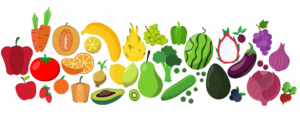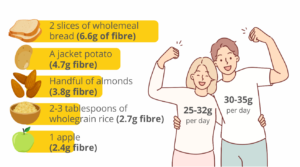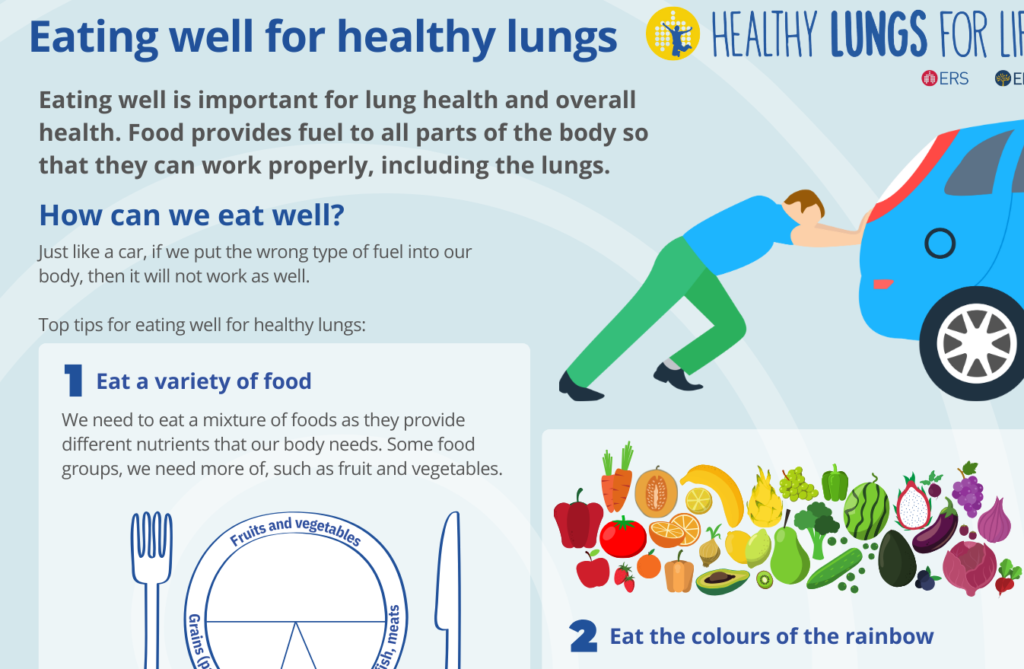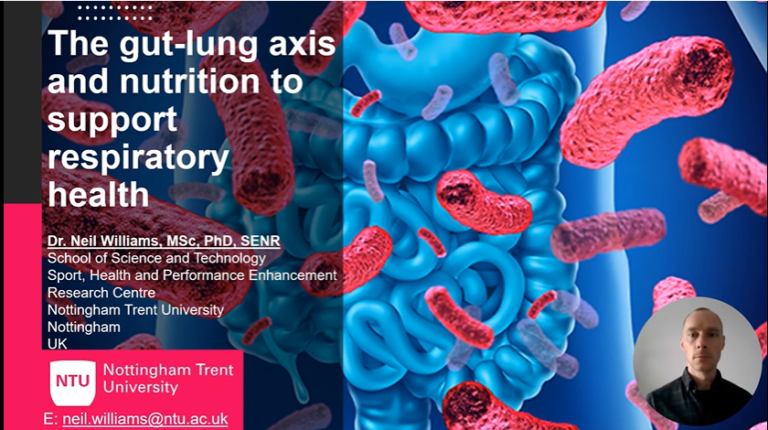Eating well for healthy lungs
Content Table
 Eating well is important for lung health and overall health.
Eating well is important for lung health and overall health.
Food provides fuel to all parts of the body so that they can work properly, including the lungs.
Just like a car, if we put the wrong type of fuel into our body, then it may not work as well.
How can we eat well?
Eat a variety of food from the different food groups
We need to eat a mixture of foods as they provide different nutrients that our body needs. We need more of some food groups, such as fruit and vegetables, and less of other food groups. The suggested plate below gives an idea of how to split each meal by food group.

This advice differs between countries. To see an overview of recommendations from across Europe, visit the European Union’s Health Promotion and Disease Prevention Knowledge Gateway.
Eat the colours of the rainbow
Eating fruit and vegetables as part of a balanced diet has been linked with improved lung health[1]. By choosing different colours of fruit and vegetables, you can provide different nutrients to your body and your lungs.

Eat more fibre

Foods high in fibre include fruits, vegetables, grains, oats, beans and lentils. When you eat a good amount of fibre, you are also less likely to develop lung conditions over the course of your life [2]. Most European dietary guidelines recommend a daily intake of fibre of 25-35 g for adults (30-35 g of fibre per day for men and 25-32 g per day for women) [3].
Do not eat too much, or too little
- Eating more than your body needs can lead to your body storing this as excess weight. This means your breathing system may need to work harder. It can also increase your chance of developing some lung conditions, such as asthma.
- Eating less than your body needs can lead to being underweight. This means you do not get enough energy and you are more at risk of infections and breathing difficulties.
Limit foods high in fat, salt and sugar
Some foods contain high amounts of sugar, salt and harmful fats (saturated and trans fats) and low amounts of nutrients. This includes pre-prepared meals, fast-foods, chocolate, sweets, crisps, fizzy drinks and packaged biscuits and cakes. Try to limit these types of foods to no more than once per day and not every day. These foods may increase the risk of asthma and wheezing [4] and reduce your body’s chance of fighting off infections [5].
For example, too much salt has also been linked with high blood pressure [6], swelling (inflammation) [7] and asthma [8]. You can lower salt in your diet by choosing low-salt or no-added salt options such as low-salt stock cubes and ‘no-added salt’ canned vegetables and beans. You can also use herbs and spices to add flavours to food.
Building on the basics
Keeping your gut healthy
The gut is part of the digestion system and is responsible for managing food intake and waste. It includes your stomach, intestines and colon. The health of your gut is linked to your lung health.

Our gut is full of trillions of bacteria that break down the food we eat. They also help our body to fight off infections by supporting our immune system, particularly within the lungs. We can keep our gut healthy by eating lots of fibre and increasing the prebiotics and probiotics in our diet.
- Probiotics are ‘good bacteria’ found in foods such as yoghurt and sauerkraut. They help to create a healthy balance in the gut.
- Prebiotics are food for the good bacteria. They act as a fertiliser to the good bacteria from probiotics to keep them alive. They can be found in foods such as whole grains, bananas, greens, onions, garlic, soybeans and artichokes.
- Probiotics and prebiotics are added to some foods and are available as dietary supplements.
When we have a balance of healthy bacteria in the gut and the lungs, it can reduce swelling (inflammation) in the lungs, which is often the cause of wheezing, shortness of breath, chest pain and coughing [9].
Vitamin D
Vitamin D is an important nutrient for keeping the lungs healthy. Higher levels of vitamin D have been linked with better lung health. Lower levels of vitamin D are common in people who live with lung conditions, such as asthma and COPD.
Our body can make vitamin D with the help of the UV rays from the sun. It can also be found in foods such as oily fish and egg yolks. In countries in the northern hemisphere, where levels of sunlight are low, it is recommended that people take a supplement during the darker months to maintain good levels of this vitamin. Choosing foods that have been fortified with vitamin D can also help.
Support breastfeeding
What we eat as a baby is important for the development of the lungs and lung health as you grow. Breastfeeding in early life may reduce lung infections and improve how well the lungs grow in childhood and into the teenage years [10]. Healthcare systems and governments should prioritise services that support new mothers to breastfeed, where possible.
Acknowledgements
This document was produced with the aim of teaching the public about a healthy diet to maintain healthy lungs and to help healthcare professionals explain the benefits of good nutrition. It was produced by the European Lung Foundation (ELF) as part of the Healthy Lungs for Life campaign, with the support of the ELF patient network, the ERS Health and Environment Committee and healthcare professionals Megan Jensen and Neil Williams.







